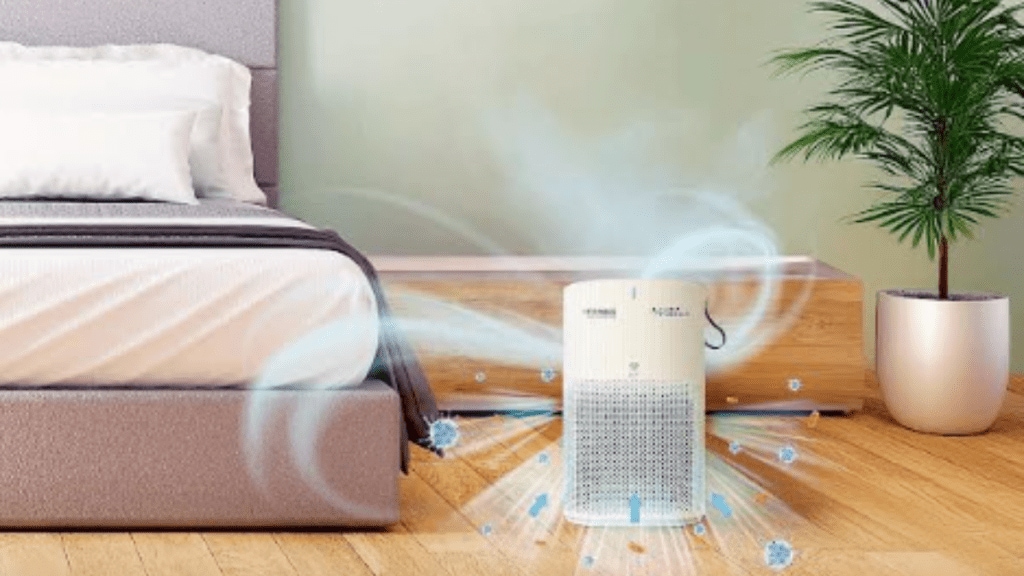Winter pollution might no longer be an anomaly, but air purifier brands don’t want their fortunes tied to a single season. As pollution episodes become a predictable civic concern, brands are using the October-December spike as a launchpad to reposition purifiers as year-round wellness devices.
Mohit Anand, co-founder & CEO, Secure Connection Ltd, the authorised global brand licensee of Honeywell, says the company is positioning air purifiers as “a year-round wellness essential”, noting steady demand from households managing asthma, allergies or newborn care. Anmay Shahlot, co-founder, Atovio, which sells wearable air purifiers, echoes this shift, pointing out that “anything above AQI 100-150 affects health,” creating use cases even in February-April months or closed office spaces.
Predictably, brands ramp up digital advertising across search, in platform, social media, and programmatic. Offline media such as print advertisements, retail activations and in-store displays are also significantly scaled up. While the acquisition cost remains high, marketers see the spends as a strategic investment to drive recall at the moment of strongest intent.
Yet even as brands broaden the narrative, the winter spike continues to be the clearest barometer of how Indians shop for purifiers. “We’re seeing customers prioritise wellness in their homes and workplaces, with indoor air quality being an important focus,” says K N Srikanth, director, home, kitchen and outdoors, Amazon India. “To serve this need, we are offering a range of options with fast delivery to every pincode, so customers can find what works for their specific needs.”
Data-led and neutral
The platform has seen a “strong 5X increase in air purifiers compared to typical days” with Delhi-NCR alone witnessing a sharp 20X surge. Demand, Srikanth adds, has risen across price bands: “The economy range (below 10,000) is growing 75% YoY, the mid-range (10,000-20,000) is rising 70% YoY, and the premium segment (above20,000) is surging 150% YoY.”
The spike is no longer limited to the capital. City-wise data on Amazon shows “a 20X uptick in Delhi-NCR compared to a normal day and a 2.5X rise in Mumbai and Kolkata,” while Tier-2 cities such as Jaipur, Lucknow and Patna are also contributing to the rise. “There has been an increase in demand from Tier 2 cities, indicating growing consumer awareness around indoor air quality,” Srikanth says.
Industry analysts say the category is poised for sharp growth driven by both necessity and awareness. “India’s air purifier industry is still relatively small (most estimates indicate a size of `1,000 crore today), but expected to grow at a CAGR of more than 20% over the next 5 years,” says Shabal Goel, vice-president, Avalon Consulting. Penetration remains well below 5% in Indian households. “It is practically a white space in Tier 2 and Tier 3 cities,” he notes, adding that air purifiers may eventually “follow a similar trajectory to RO filters and become a necessity regardless of the size of the city.” Winter skew remains acute: “As much as 50% of annual retail sales are compressed in October to December. Industry reports consistently show spikes of up to 60% in sales during these months.”
Influencer intelligence and data insights platform KlugKlug says digital search interest in air purifiers has surged by more than 2X across major brands post-Diwali, with the last 30 days showing a sharp spike over the three-month average. Its latest data indicates that Philips leads with 137% growth in search activity, followed by Qubo at 136% and Honeywell at 127%, while even Mi and Coway have recorded over 115% growth, signalling a clear rise in consumer intent. According to the platform, worsening air quality is driving a digital demand wave, with brands competing not just in retail but also for online visibility and influencer-driven discovery.
Stepping on the gas
For most brands in the category, this stuffy quarter is also the time to reallocate marketing budgets and build awareness. “In India, air purifier demand continues to be highly seasonal, with the sharpest spike occurring during the winter months when pollution levels surge,” says Anand. “We typically see around 6X rise in sales during this period, driven by worsening AQI across major metros and heightened consumer attention.”
That also means some high pitched advertising battle during the OND window. “Search and performance marketing play a critical role, as consumers actively look for solutions and compare products,” Anand says. Equally important is consumer education: “Educational content marketing through videos, social posts, and expert-led explainers helps simplify the category and build trust.”
With pollution conversations centred around big metros, awareness outside metros remain low. Tier-2 and Tier-3 cities often record worse air quality, points out Atovio’s Shahlot, but “they simply do not receive the same national media attention”. Beyond price, the biggest roadblocks include “low awareness about personal and indoor air quality”.
As competition intensifies, product innovation has also picked up pace. Dyson engineer Alex Hudson says consumers increasingly expect smart connectivity and even air circulation and the company’s air purifiers aim to do just that.

